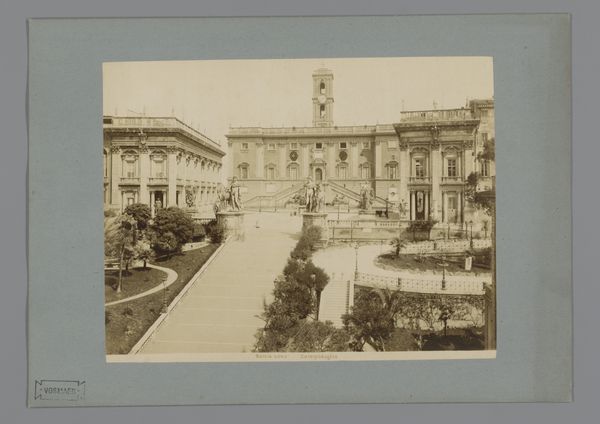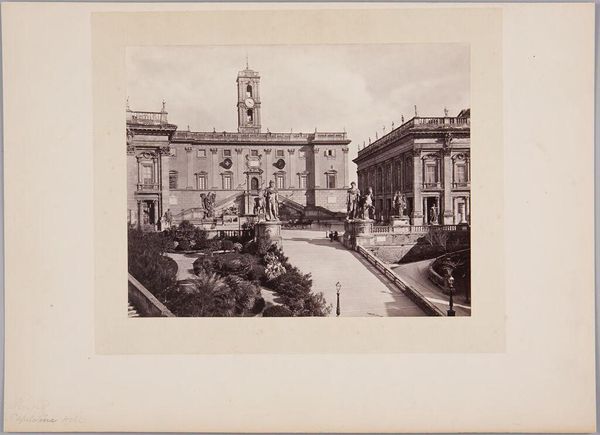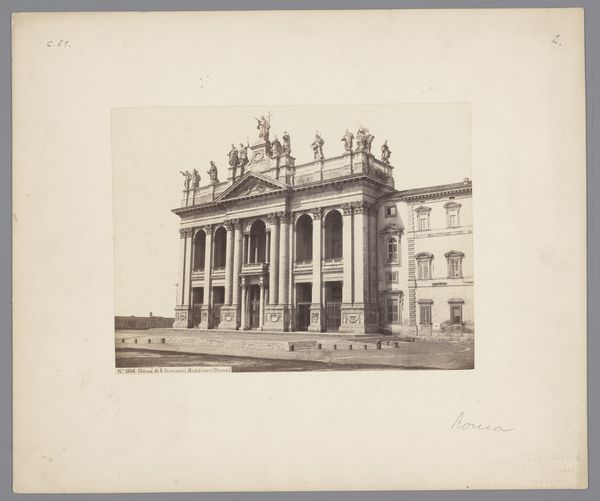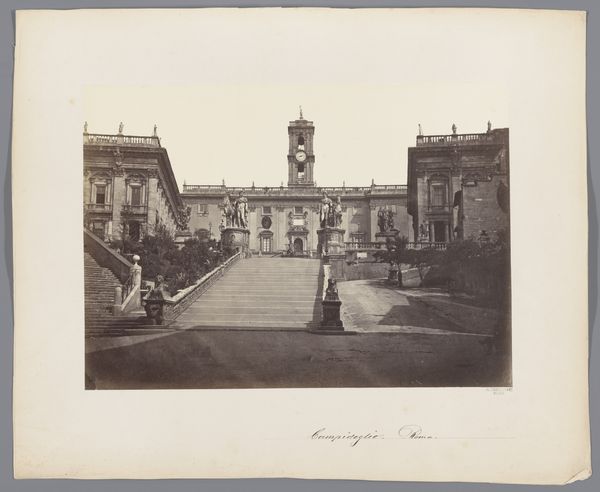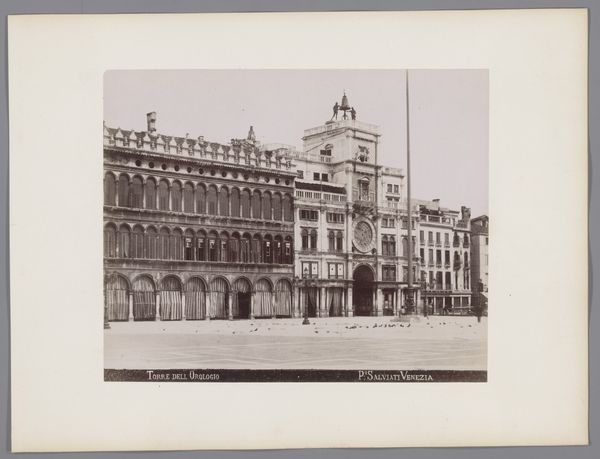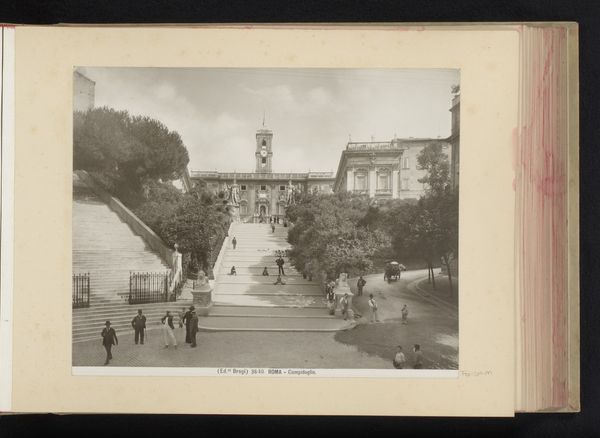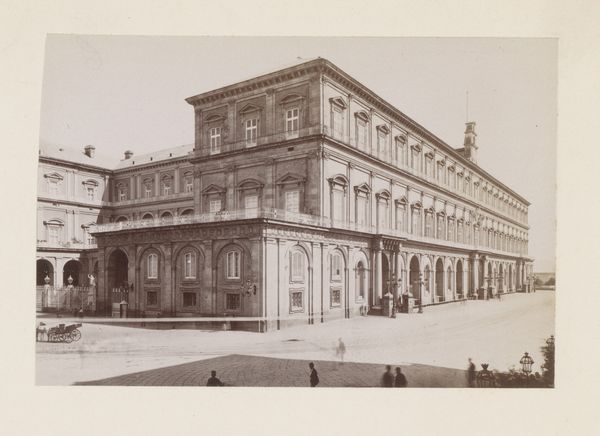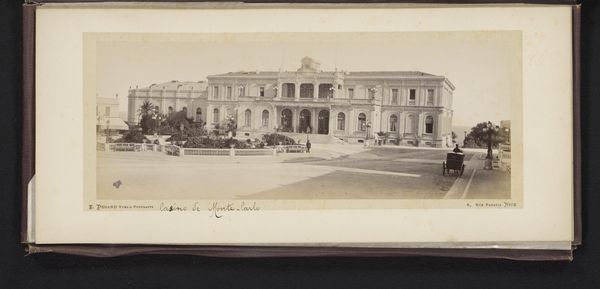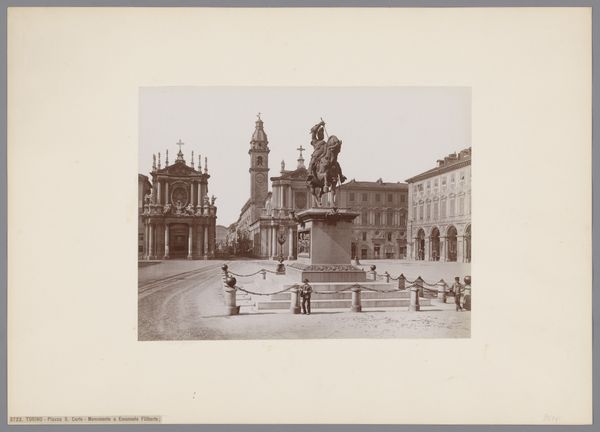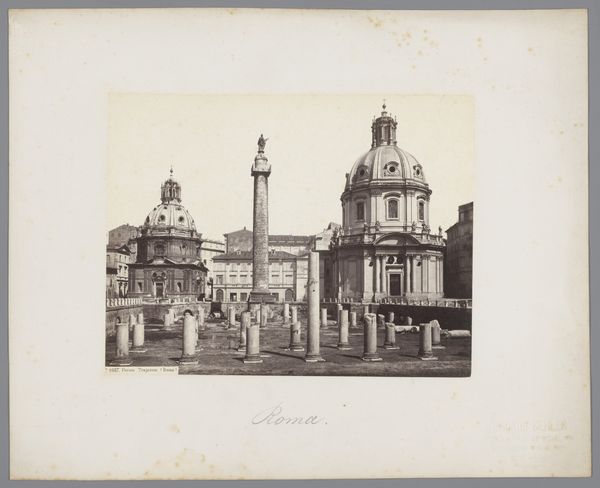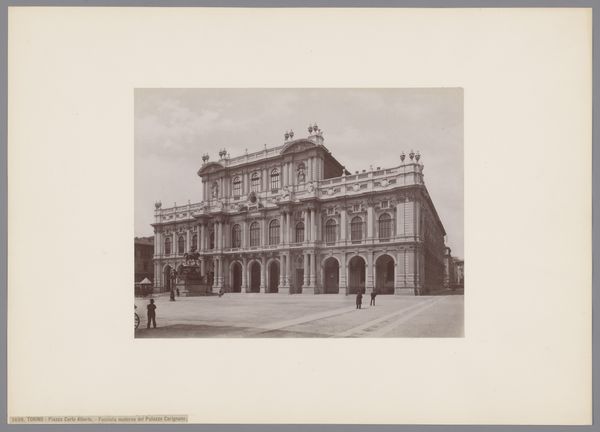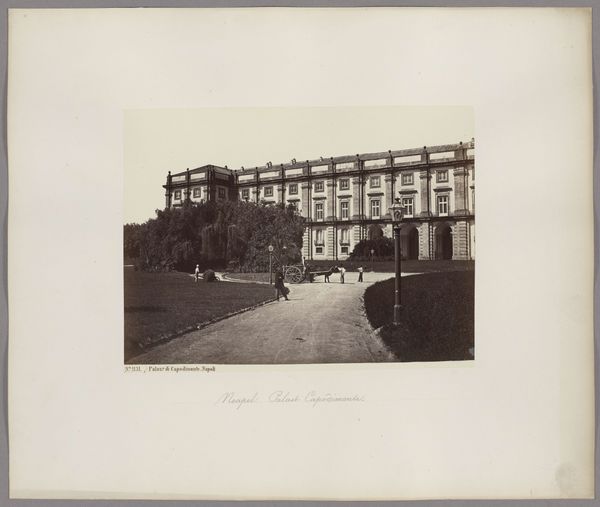
Dimensions: height 310 mm, width 378 mm
Copyright: Rijks Museum: Open Domain
Curator: Here we have an albumen print dating from sometime between 1859 and 1890, titled "Gezicht op het Capitool te Rome, Italië" – or, "View of the Capitoline Hill in Rome, Italy". It is credited to Edmondo Behles. Editor: My immediate impression is of a severe grandeur, an imposing stillness captured by the tonal range. It evokes a past made palpable through stone and careful craftsmanship. Curator: Indeed. The photograph utilizes an albumen print, a process involving coating paper with egg white, lending a unique sheen and enabling detailed reproduction. This method allowed for the dissemination of architectural views on a commercial scale. Editor: Those sculptures and architecture… they carry significant symbolic weight. Note the statues atop the buildings, silently presiding over the cityscape. This place tells a story of power, history, and enduring ideals of civic virtue. Curator: Yes, we must consider how photography in the 19th century provided an efficient medium for documenting the architecture tied up in grand narratives about historical precedence, influencing contemporary architectural aesthetics and cultural perceptions through widespread circulation and accessibility of these cityscapes. Editor: The deliberate framing directs the viewer’s eye up those long, grand steps. One cannot ignore that it implies aspiration and reverence. Even the light and shadows contribute. The interplay is a dramatic device. Curator: Also, observe how the production of albumen prints involves meticulous labor, from preparing the paper to the chemical processes to set the image. Every print represents hours of skilled work, reflective of broader manufacturing practices and emerging media distribution. Editor: This piece, then, offers far more than just a pretty landscape. The material history underscores how this technology shaped consumption, understanding, and idealization of cities across different nations, while we simultaneously understand how history shapes symbols. Curator: I agree. We examined labor practice, market forces, Neoclassicism's impact on architecture, and of course, albumen printing's own aesthetic values within our own context. Editor: From iconography, we glimpsed aspirations held in stone, immortalized on a page using these specific, deliberate visual languages and enduring human desire for creating monuments that inspire awe.
Comments
No comments
Be the first to comment and join the conversation on the ultimate creative platform.
